�
Optimal Control with Engineering Applications
Hans P. Geering
Hans P. Geering
Optimal Control
with Engineering
Applications
With 12 Figures
123
�
Hans P. Geering, Ph.D.
Professor of Automatic Control and Mechatronics
Measurement and Control Laboratory
Department of Mechanical and Process Engineering
ETH Zurich
Sonneggstrasse 3
CH-8092 Zurich, Switzerland
Library of Congress Control Number: 2007920933
ISBN 978-3-540-69437-3 Springer Berlin Heidelberg New York
This work is subject to copyright. All rights are reserved, whether the whole or part of the material
is concerned, specifically the rights of translation, reprinting, reuse of illustrations, recitation, broad-
casting, reproduction on microfilm or in any other way, and storage in data banks. Duplication of
this publication or parts thereof is permitted only under the provisions of the German Copyright Law
of September 9, 1965, in its current version, and permission for use must always be obtained from
Springer. Violations are liable for prosecution under the German Copyright Law.
Springer is a part of Springer Science+Business Media
springer.com
© Springer-Verlag Berlin Heidelberg 2007
The use of general descriptive names, registered names, trademarks, etc. in this publication does not
imply, even in the absence of a specific statement, that such names are exempt from the relevant
protective laws and regulations and therefore free for general use.
Typesetting: Camera ready by author
Production: LE-TEX Jelonek, Schmidt & Vöckler GbR, Leipzig
Cover design: eStudi Calamar
Steinen-Bro
o
S.L. F.
,
o
, Girona, Spain
SPIN 11880127
7/3100/YL - 5 4 3 2 1 0
Printed on acid-free paper
�
Foreword
This book is based on the lecture material for a one-semester senior-year
undergraduate or first-year graduate course in optimal control which I have
taught at the Swiss Federal Institute of Technology (ETH Zurich) for more
than twenty years. The students taking this course are mostly students in
mechanical engineering and electrical engineering taking a major in control.
But there also are students in computer science and mathematics taking this
course for credit.
The only prerequisites for this book are: The reader should be familiar with
dynamics in general and with the state space description of dynamic systems
in particular. Furthermore, the reader should have a fairly sound understand-
ing of differential calculus.
The text mainly covers the design of open-loop optimal controls with the help
of Pontryagin’s Minimum Principle, the conversion of optimal open-loop to
optimal closed-loop controls, and the direct design of optimal closed-loop
optimal controls using the Hamilton-Jacobi-Bellman theory.
In theses areas, the text also covers two special topics which are not usually
found in textbooks: the extension of optimal control theory to matrix-valued
performance criteria and Lukes’ method for the iterative design of approxi-
matively optimal controllers.
Furthermore, an introduction to the phantastic, but incredibly intricate field
of differential games is given. The only reason for doing this lies in the
fact that the differential games theory has (exactly) one simple application,
namely the LQ differential game. It can be solved completely and it has a
very attractive connection to the H∞ method for the design of robust linear
time-invariant controllers for linear time-invariant plants. — This route is
the easiest entry into H∞ theory. And I believe that every student majoring
in control should become an expert in H∞ control design, too.
The book contains a rather large variety of optimal control problems. Many
of these problems are solved completely and in detail in the body of the text.
Additional problems are given as exercises at the end of the chapters. The
solutions to all of these exercises are sketched in the Solution section at the
end of the book.
�
vi
Foreword
Acknowledgements
First, my thanks go to Michael Athans for elucidating me on the background
of optimal control in the first semester of my graduate studies at M.I.T. and
for allowing me to teach his course in my third year while he was on sabbatical
leave.
I am very grateful that Stephan A. R. Hepner pushed me from teaching the
geometric version of Pontryagin’s Minimum Principle along the lines of [2],
[20], and [14] (which almost no student understood because it is so easy, but
requires 3D vision) to teaching the variational approach as presented in this
text (which almost every student understands because it is so easy and does
not require any 3D vision).
I am indebted to Lorenz M. Schumann for his contributions to the material
on the Hamilton-Jacobi-Bellman theory and to Roberto Cirillo for explaining
Lukes’ method to me.
Furthermore, a large number of persons have supported me over the years. I
cannot mention all of them here. But certainly, I appreciate the continuous
support by Gabriel A. Dondi, Florian Herzog, Simon T. Keel, Christoph
M. Sch¨ar, Esfandiar Shafai, and Oliver Tanner over many years in all aspects
of my course on optimal control. — Last but not least, I like to mention my
secretary Brigitte Rohrbach who has always eagle-eyed my texts for errors
and silly faults.
Finally, I thank my wife Rosmarie for not killing me or doing any other
harm to me during the very intensive phase of turning this manuscript into
a printable form.
Hans P. Geering
Fall 2006
�
Contents
List of Symbols .
.
.
.
.
.
.
.
.
.
.
.
.
.
.
.
.
.
.
.
.
.
.
.
.
.
.
.
.
.
.
1 Introduction .
.
1.1 Problem Statements .
.
.
.
.
.
1.1.1 The Optimal Control Problem .
1.1.2 The Differential Game Problem .
.
.
.
.
.
.
.
.
1.3.1 Unconstrained Static Optimization .
1.3.2 Static Optimization under Constraints
.
1.2 Examples
.
1.3 Static Optimization .
1.4 Exercises .
.
.
.
.
.
.
.
.
.
.
.
.
.
.
.
.
.
.
.
.
.
.
.
.
.
.
.
.
.
.
.
.
.
.
.
.
.
.
.
.
.
.
.
.
.
.
.
.
.
.
.
.
.
.
.
.
.
.
.
.
.
.
.
.
.
.
.
.
.
.
.
.
.
.
.
.
.
.
.
.
2 Optimal Control .
.
.
.
.
.
.
.
.
.
.
.
.
.
.
.
.
.
2.1 Optimal Control Problems with a Fixed Final State .
.
.
.
2.1.1 The Optimal Control Problem of Type A .
.
2.1.2 Pontryagin’s Minimum Principle .
.
2.1.3 Proof .
.
.
2.1.4 Time-Optimal, Frictionless,
.
.
.
.
.
.
.
.
.
.
.
.
.
.
.
.
.
.
.
Horizontal Motion of a Mass Point
.
.
.
2.1.5 Fuel-Optimal, Frictionless,
2.2 Some Fine Points
Horizontal Motion of a Mass Point
.
.
2.2.1 Strong Control Variation and
.
.
.
.
.
.
.
.
.
.
.
.
.
.
.
.
.
.
.
.
.
.
.
.
.
.
.
.
.
.
.
.
global Minimization of the Hamiltonian .
.
2.2.2 Evolution of the Hamiltonian
.
.
2.2.3 Special Case: Cost Functional J(u) = ±xi(tb)
.
.
.
.
.
.
.
.
.
.
.
.
.
.
.
.
.
.
.
.
.
.
.
.
.
.
.
.
.
.
.
.
.
.
.
.
.
.
.
.
.
.
.
.
.
.
.
.
.
.
.
.
.
.
.
.
.
.
.
.
.
.
.
.
1
3
.
3
.
3
.
4
.
.
5
. 18
. 18
. 19
. 22
. 23
. 24
. 24
. 25
. 25
28
32
. 35
35
. 36
. 36
�
viii
Contents
2.3 Optimal Control Problems with a Free Final State
2.3.1 The Optimal Control Problem of Type C .
.
2.3.2 Pontryagin’s Minimum Principle .
2.3.3 Proof .
.
.
.
.
.
2.3.4 The LQ Regulator Problem .
.
.
.
.
.
.
.
.
.
.
.
.
.
.
.
.
.
.
.
.
.
.
.
.
.
.
.
.
.
.
.
.
.
.
2.4 Optimal Control Problems with a
.
.
.
.
.
.
.
.
.
.
.
.
Partially Constrained Final State .
2.4.1 The Optimal Control Problem of Type B .
.
2.4.2 Pontryagin’s Minimum Principle .
.
2.4.3 Proof .
.
.
.
.
2.4.4 Energy-Optimal Control
.
.
.
.
.
2.5 Optimal Control Problems with State Constraints .
.
.
.
.
.
.
.
.
.
.
2.5.1 The Optimal Control Problem of Type D .
.
.
2.5.2 Pontryagin’s Minimum Principle .
2.5.3 Proof .
.
.
.
2.5.4 Time-Optimal, Frictionless, Horizontal Motion of a
.
.
.
.
.
.
.
.
.
.
.
.
.
.
.
.
.
.
.
.
.
.
.
.
.
.
.
.
.
.
.
.
.
.
.
.
.
.
.
.
.
.
2.6 Singular Optimal Control
Mass Point with a Velocity Constraint .
.
.
.
2.6.1 Problem Solving Technique
2.6.2 Goh’s Fishing Problem .
2.6.3 Fuel-Optimal Atmospheric Flight of a Rocket
.
.
.
.
.
.
.
.
.
.
.
.
.
.
.
.
.
.
.
.
.
.
.
.
2.7 Existence Theorems .
.
2.8 Optimal Control Problems
.
.
.
.
.
.
.
.
.
.
with a Non-Scalar-Valued Cost Functional
.
.
2.8.1 Introduction .
.
.
2.8.2 Problem Statement .
.
.
2.8.3 Geering’s Infimum Principle .
.
.
2.8.4 The Kalman-Bucy Filter
.
.
.
.
.
.
.
.
.
.
.
.
.
.
.
.
.
.
.
.
.
.
.
.
.
.
.
.
.
2.9 Exercises .
.
.
.
.
.
.
.
.
.
.
.
.
.
.
.
.
.
.
.
.
.
.
.
.
.
.
.
.
.
.
.
.
.
.
.
.
.
.
.
.
.
.
.
.
.
.
.
.
.
.
.
.
.
.
.
.
.
.
.
.
.
.
.
.
.
.
.
.
.
.
.
.
.
.
.
.
.
.
.
.
.
.
.
.
.
.
.
.
.
.
.
.
.
.
.
.
.
.
.
.
.
.
.
.
.
.
.
.
3 Optimal State Feedback Control .
.
.
3.1 The Principle of Optimality
.
3.2 Hamilton-Jacobi-Bellman Theory .
.
.
.
3.2.1 Sufficient Conditions for the Optimality of a Solution .
3.2.2 Plausibility Arguments about the HJB Theory .
.
.
.
.
.
.
.
.
.
.
.
.
.
.
.
.
.
.
.
.
.
.
.
.
.
.
.
.
.
.
.
.
.
.
. 38
. 38
. 38
. 39
. 41
. 43
. 43
. 43
. 44
. 46
. 48
. 48
. 49
. 51
54
. 59
. 59
. 60
. 62
. 65
. 67
. 67
. 68
. 68
. 69
. 72
. 75
. 75
. 78
. 78
. 80
�
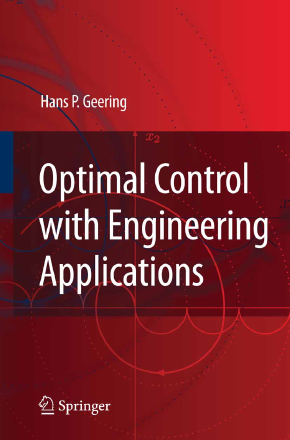
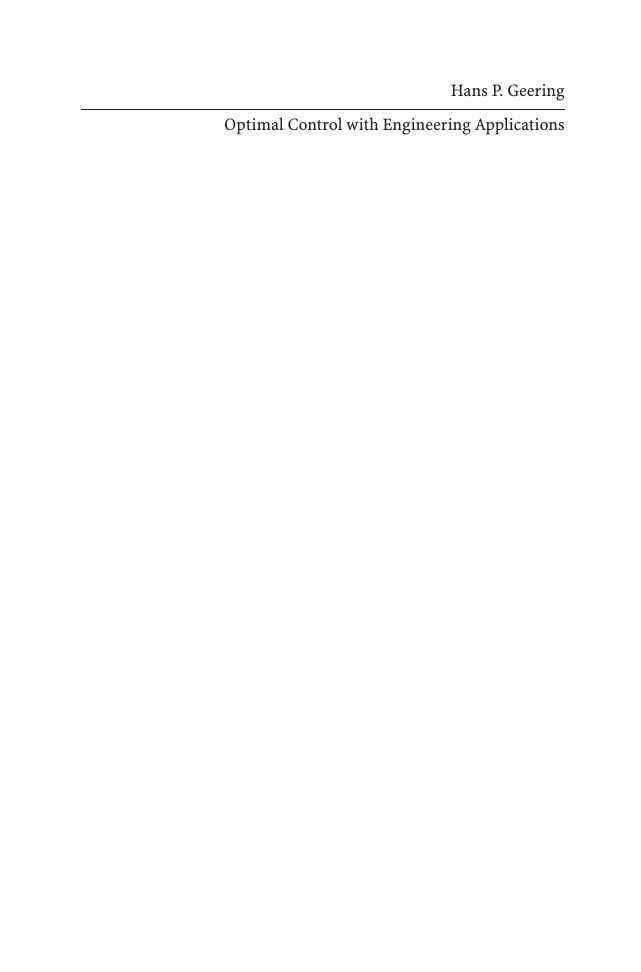
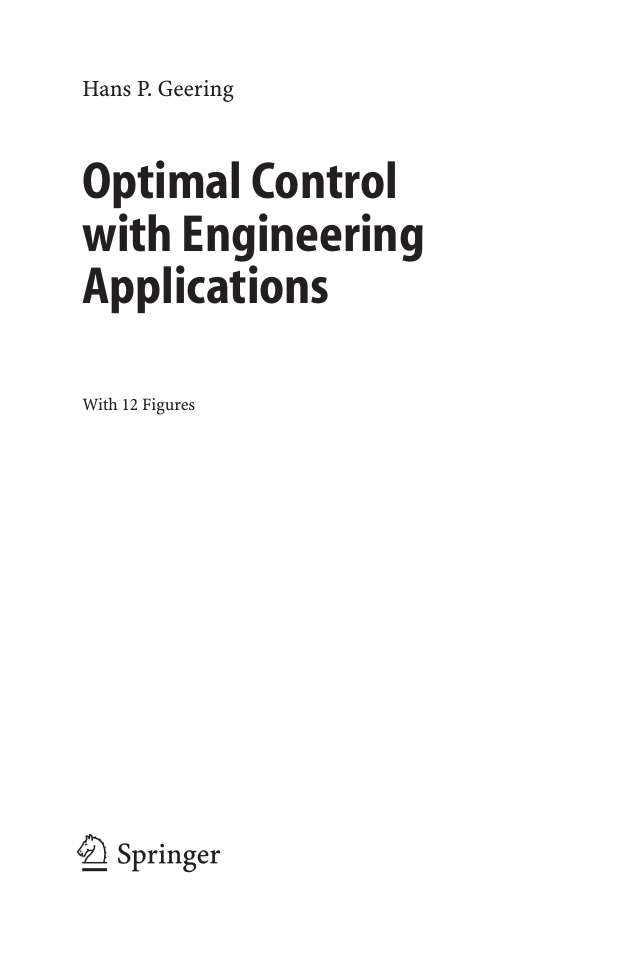
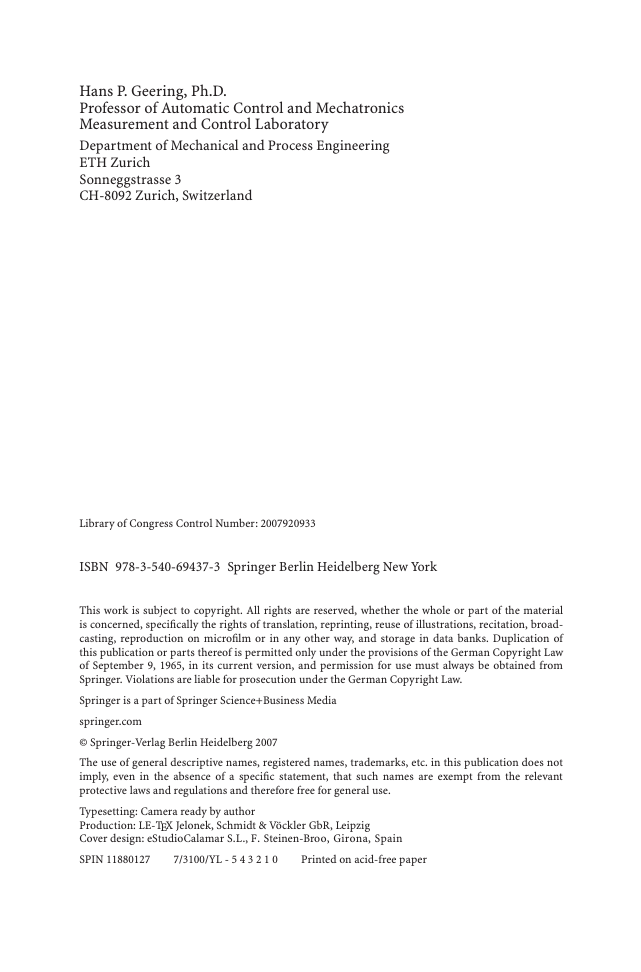
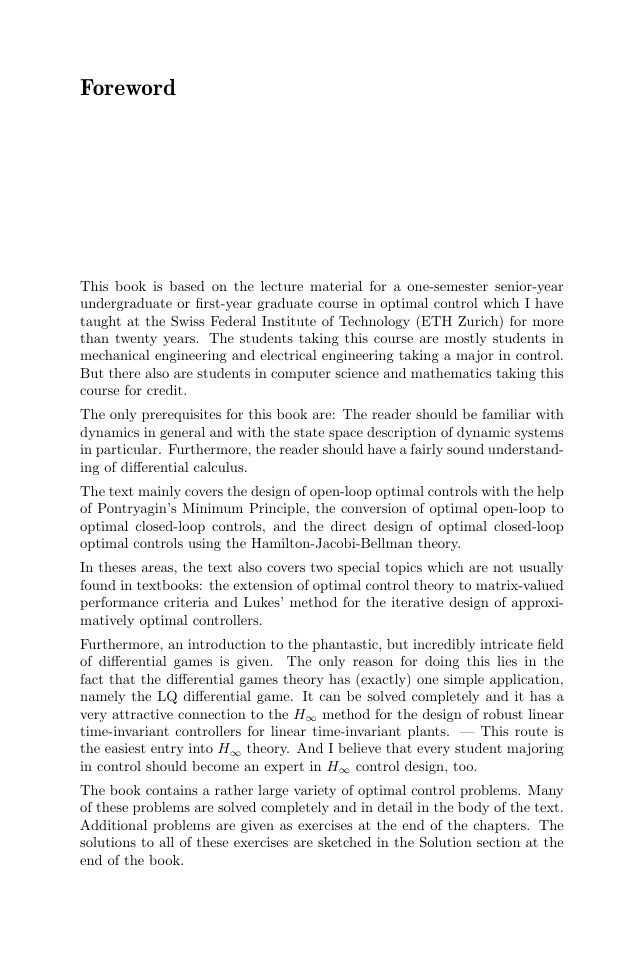
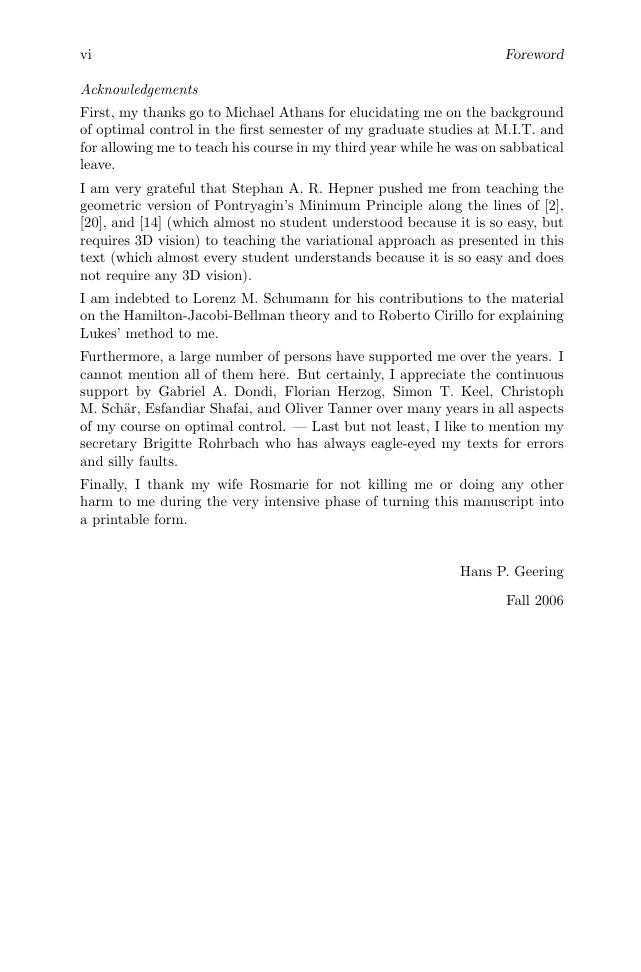
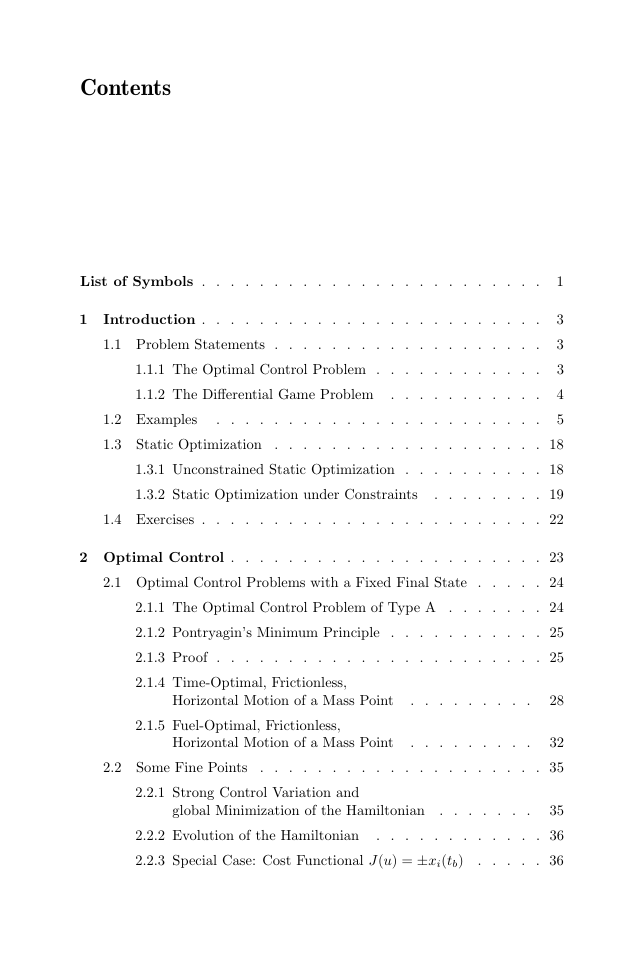









 2023年江西萍乡中考道德与法治真题及答案.doc
2023年江西萍乡中考道德与法治真题及答案.doc 2012年重庆南川中考生物真题及答案.doc
2012年重庆南川中考生物真题及答案.doc 2013年江西师范大学地理学综合及文艺理论基础考研真题.doc
2013年江西师范大学地理学综合及文艺理论基础考研真题.doc 2020年四川甘孜小升初语文真题及答案I卷.doc
2020年四川甘孜小升初语文真题及答案I卷.doc 2020年注册岩土工程师专业基础考试真题及答案.doc
2020年注册岩土工程师专业基础考试真题及答案.doc 2023-2024学年福建省厦门市九年级上学期数学月考试题及答案.doc
2023-2024学年福建省厦门市九年级上学期数学月考试题及答案.doc 2021-2022学年辽宁省沈阳市大东区九年级上学期语文期末试题及答案.doc
2021-2022学年辽宁省沈阳市大东区九年级上学期语文期末试题及答案.doc 2022-2023学年北京东城区初三第一学期物理期末试卷及答案.doc
2022-2023学年北京东城区初三第一学期物理期末试卷及答案.doc 2018上半年江西教师资格初中地理学科知识与教学能力真题及答案.doc
2018上半年江西教师资格初中地理学科知识与教学能力真题及答案.doc 2012年河北国家公务员申论考试真题及答案-省级.doc
2012年河北国家公务员申论考试真题及答案-省级.doc 2020-2021学年江苏省扬州市江都区邵樊片九年级上学期数学第一次质量检测试题及答案.doc
2020-2021学年江苏省扬州市江都区邵樊片九年级上学期数学第一次质量检测试题及答案.doc 2022下半年黑龙江教师资格证中学综合素质真题及答案.doc
2022下半年黑龙江教师资格证中学综合素质真题及答案.doc